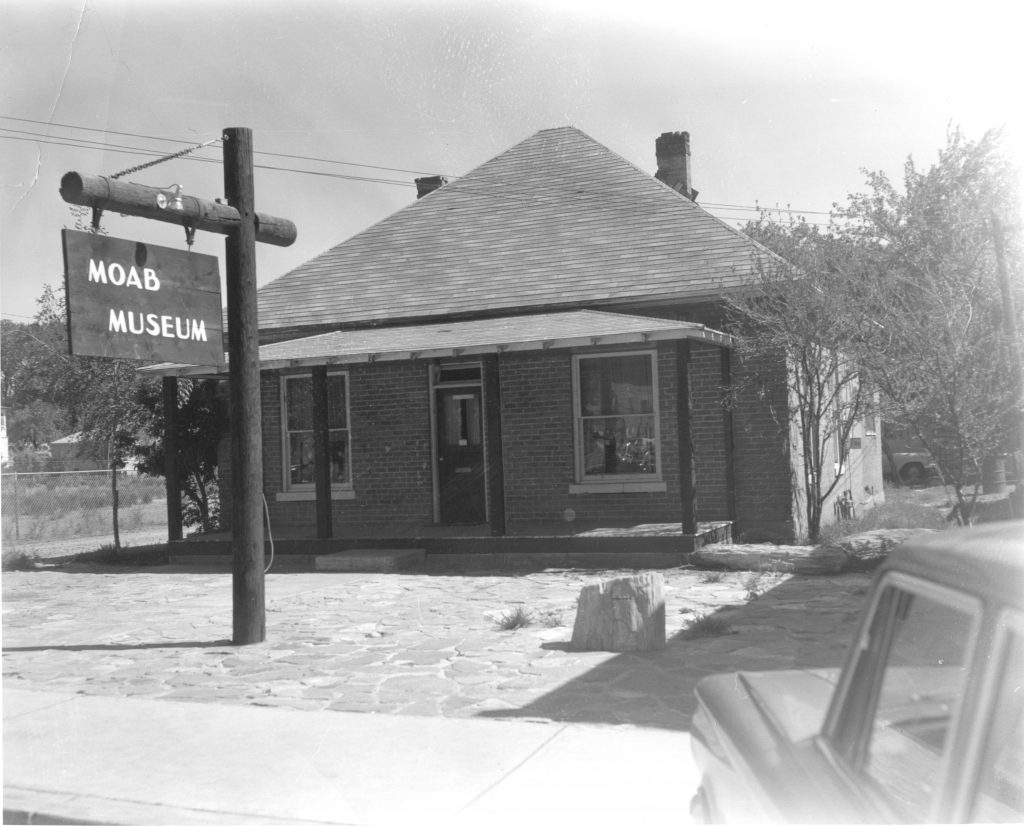What is in the Moab Museum Collection and how did its objects, photos and documents end up under the museum’s care?
If you follow our weekly column, you know that we consistently share stories from the collection to highlight unique, interesting, and historically pivotal objects. If this is your first time reading the column, be on the lookout for future issues where Moab Museum staff dive deep into both object stories and museum processes. This brings us to how these objects came into the care of the Moab Museum.
The Museum’s collection was first envisioned in 1958 when the Women’s Literary Club of Moab chose forming a museum as its community project, aiming to “preserve, display, and interpret the various archaeological, paleontological, geological, historical, and mineralogical resources so abundant in our area.” The community can find elements of this goal in the current mission of the Moab Museum: We seek to educate and inspire our community about the cultural and natural history of Moab and the Canyonlands region.
During the uranium boom, the Moab community recognized that artifacts were disappearing at an alarming rate from archaeological sites in the surrounding area. The Moab Museum intended to see that what remained was preserved for educational and community needs.
In the same year as the Museum’s founding, the organization acquired the first elements of its collection. These first donated items were from the private collections of Ross Musselman, Jack and Ila Corbin, and Dr. J.W. Williams, and consisted of pre-contact cultural materials and a telephone history collection. From 1958-2018, the collection grew organically, and in 2019, the Moab Museum set a new standard for accepting objects and caring for collections in line with the American Alliance of Museums’ standards.

How do museums acquire new objects, photos, and documents?
Revised in 2022 by Curatorial and Collections Manager Tara Beresh, the Moab Museum’s “Scope of Collections Statement” (part of our Collections Management Policy) outlines for museum staff, Board of Trustees, and the greater public, the “parameters of collecting, the principles which guide accessioning, and the ethical considerations involved in both.”
Within this document, the Moab Museum lays out primary geographic and temporal ranges, as well as a thematic statement which guide museum acquisitions. The policies ensure that only highly relevant objects are acquired and housed at the museum. This also means that the Museum will recommend objects be cared for at other institutions if they merit a deeper community significance elsewhere.
The museum is looking to grow its collections, particularly geology/paleontology, Indigenous lifeways, early local history, transportation history, mining and the discovery of uranium, public lands management, recreation and tourism, multicultural presence and influence, and art. Next week we’ll tackle the question, “I have an object within these categories that I’d like to donate; what’s next?”
The Moab Museum is dedicated to sharing stories of the natural and human history of the Moab area. This is part of a series highlighting photographs and stories of downtown Moab over time. To explore more of Moab’s stories and artifacts, find out about upcoming programs, and become a Member, visit www.moabmuseum.org.




